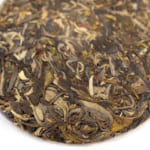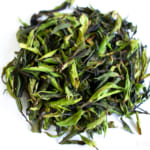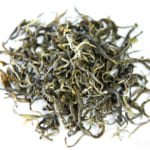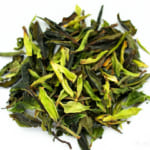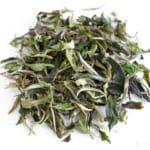- HOME >
- Types of Tea
Three Completely Different Ways to Enjoy White Tea
- [2024.06.01] Posted By Akira Hojo

White tea has been gaining popularity and attention recently, prompting exploration into various ways to enjoy this delicate tea. Here, we introduce three distinct methods to savor white tea, each offering a unique and delightful experience.
About White Tea
The classification of white tea is primarily based on its crafting process rather than its visual appearance or colour.
White tea undergoes a distinct crafting method characterized by the absence of rolling and inactivation of enzyme by heat treatment. Instead, the leaves are allowed to naturally wither, gradually reducing moisture content. Once the moisture level reaches approximately 20% or lower, the tea is dried using either sunlight or airflow, without undergoing common heat treatments such as pan-frying or steaming, as seen in other tea production.
This unique crafting approach bestows two notable features upon white tea, setting it apart from other types:
1. Enzymes (oxidizing enzymes) are preserved in their natural state.
2. The tea components stay unchanged without heat-induced oxidation.
A comprehensive understanding of these two characteristics unveils three distinctive traits of white tea outlined below.
1. Brewing white tea advances enzymatic oxidation, creating a fruity flavor
White tea contains active enzymes, particularly Polyphenol Oxidase (PPO), which catalyze oxidation in tea. These enzymes, being proteins, require sufficient moisture and temperature to function. Interestingly, they become inactive at temperatures between 60°C to 70°C due to their protein nature.
One might naturally assume that enzymes deactivate as soon as tea is brewed. However, when brewing white tea with hot water, the internal temperature of the tea stem gradually rises. This gradual increase triggers the sudden activation of enzymes, leading to enzymatic oxidation during the brewing process.
As a result, white tea brewed with hot water undergoes a colour transformation from green to a beige-brown hue, releasing a fruity aroma reminiscent of Darjeeling black tea. This enzymatic oxidation enriches the tea’s flavor profile, imparting delightful fruity notes to the brew.

When brewing white tea, my goal is to quickly stop enzymatic oxidation while controlling its progression to avoid excessive oxidation. This method highlights a fresher, fruity aroma in the tea. To achieve this, I preheat the tea ware, then pour boiling water over the tea leaves. After 10 seconds, I discard this initial pour, repeat the process with a second pour, and discard it after 5 to 10 seconds. Finally, with the third pour, I allow the tea to steep for about 10 seconds. The main objective is to rapidly raise the temperature to effectively deactivate the enzymes.
Brewing white tea at lower temperatures causes a slower temperature increase, which can lead to more enzymatic oxidation and a noticeable change in flavor.

2. Cold brewing yields a vibrant green hue and a refreshing aroma
When it comes to cold brewing white tea, the process provides a significantly different experience compared to hot brewing. Using cold water, the activation of enzymes is minimal, which preserves the pure essence of white tea. While hot water brewing triggers enzymatic fermentation and results in a brownish hue, cold brewing maintains the vibrant green color of the tea leaves. This method not only keeps the tea’s natural appearance but also retains its delicate and fresh flavor profile.
Cold brew white tea boasts a distinct taste and aroma profile, characterized by its refreshing fragrance reminiscent of flowers or perilla leaves. To prepare, I typically use 5g of tea leaves in 2 liters of cold water, allowing it to steep in the refrigerator for half a day to overnight. Afterward, I remove the steeped tea leaves to enjoy the refreshing cold brew white tea.

In cold brewing, the enzymes within the tea leaves remain inactive, preserving their fresh green colour. This contrasts with hot water brewing, where enzymatic activity leads to oxidation and a change in colour.
3. Aging white tea leads to a notable transformation, enriching its aroma with notes reminiscent of honey and grapes.
White tea, akin to Pu-erh tea, is revered for its potential to age gracefully over time.
Over the years, as white tea matures, it develops a uniquely sweet and robust aroma, distinct from its fresh counterpart. In fact, white tea tends to exhibit more pronounced aging characteristics compared to Pu-erh tea. When aged in an oxygen-free environment for an extended period, white tea undergoes a remarkable transformation. It acquires fragrances reminiscent of grapes, tropical fruits, and honey, while the taste becomes smoother and more velvety, offering a truly indulgent tea-drinking experience.
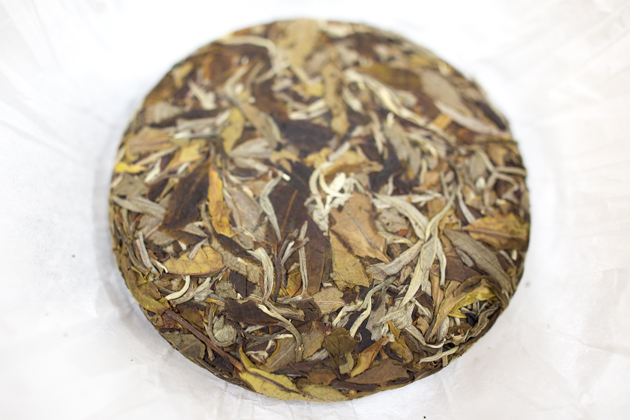
We personally favor a delicate and refined approach to aging, opting to store our white tea in an oxygen-free environment. However, the more common practice involves allowing oxidation through exposure to oxygen over time.
The aerobic aging method significantly expedites the aging process but may introduce off-notes and a slightly musty aroma, leading to a transformation towards a somewhat dark tea profile. Aromas include dried fruits, dried mushrooms, and woody scents. In contrast, anaerobic aging progresses at a slower pace, resulting in a fresher and more vivid fruity flavor, reminiscent of natural wine.
For enthusiasts of anaerobic aging, keeping HOJO’s white tea unopened is recommended to preserve its integrity. Conversely, for those opting for aerobic aging, resealing the bag after opening and storing it for several years is advisable. It’s worth noting that aging occurs more rapidly in environments with higher temperatures.
Related Articles
How to get the latest update on HOJO?
1. Follow Twitter, 2. Click "Like" on Facebook, and 3. Subscribe in newsletter. You can have the latest tea news from HOJO.
 Subscribe the Newsletter to enjoy the privileges
Subscribe the Newsletter to enjoy the privileges- You may receive a free sample upon purchase, or you may have the priority to purchase special products. So please remember to subscribe our newsletter as well as the social network.
- Myanmar White Tea Bud 2013 from Guo Gan, Myanmar
- We have released a raw Pu-erh tea, 緬甸白芽茶 2013 (Myanmar White Tea Bud 2013), produced by ethnic minorities in t …
- Yong De Wild White Tea 2025 Loose Leaf Limited Release
- We have released Yong De Wild White Tea Loose 2025. For the 2025 harvest, only the loose-leaf type was …
NEW ARTICLES
 Myanmar White Tea Bud 2013 from Guo Gan, Myanmar
Myanmar White Tea Bud 2013 from Guo Gan, Myanmar- We have released a raw Pu-erh tea, 緬甸白芽茶 2013 (Myanmar White Tea Bud 2013), produced by ethnic minorities in t …
 Yong De Wild White Tea 2025 Loose Leaf Limited Release
Yong De Wild White Tea 2025 Loose Leaf Limited Release- We have released Yong De Wild White Tea Loose 2025. For the 2025 harvest, only the loose-leaf type was …
 Experience the True Freshness of Raw Pu-erh : Tang Jia 2025 Loose Leaf Release
Experience the True Freshness of Raw Pu-erh : Tang Jia 2025 Loose Leaf Release- We have released Tang Jia Raw Pu-erh Tea 唐家古樹生茶 2025 Loose Leaf. Among HOJO’s raw pu-erh teas, Tang Jia Raw Pu …
 Yunnan Chun Jian Green Tea from High Mountain Gardens
Yunnan Chun Jian Green Tea from High Mountain Gardens- Yunnan Chun Jian Green Tea is now available. This tea is made from naturally grown leaves harvested from high …
 Limited Loose Leaf Release of 2025 Da Xue Shan Wild Raw Pu-erh Tea
Limited Loose Leaf Release of 2025 Da Xue Shan Wild Raw Pu-erh Tea- We have released the 2025 loose-leaf version of Da Xue Shan Wild Raw Pu-erh Tea. This tea comes from wild tea …
 Discover a New Way to Enjoy Tea: Cooking Rice with Tea
Discover a New Way to Enjoy Tea: Cooking Rice with Tea- Cooking rice with tea is a simple idea, but it brings surprisingly satisfying results. The tea’s flavour seeps …
 2025 Da Xue Shan Wild White Tea Now Available from Yunnan
2025 Da Xue Shan Wild White Tea Now Available from Yunnan- The 2025 harvest of Da Xue Shan Wild White Tea is now available. Crafted from truly wild Camellia taliensis tr …
 Fresh 2025 Yunnan White Tea – Select Your Favourite Lot Before Blending
Fresh 2025 Yunnan White Tea – Select Your Favourite Lot Before Blending- Freshly crafted in Yunnan and just arrived in KL, our new 2025 white tea is now available at our Gardens Mall …
 2024 Dong Shan Raw Pu-erh Tea – Crafted with the Producer for Desired Quality
2024 Dong Shan Raw Pu-erh Tea – Crafted with the Producer for Desired Quality- We have released the 2024 cake of Dong Shan Raw Pu-erh Tea. Earlier, we offered the loose-leaf version from th …
 Development of Firewood Roasted Hojicha Using Naturally Grown Tea from Yunnan
Development of Firewood Roasted Hojicha Using Naturally Grown Tea from Yunnan- We are currently staying in Yunnan Province for tea production. As the season nears its end, tea trees with pa …
Category
- New Arrival at HOJO Online Shop
- Featured Articles
- Newsletter
- Types of Tea
- Origin of Tea
- Teapot and Tea Equipment
- Tea Column
- How to enjoy tea
- Tea Processing
- How to choose quality tea
- Tea constituents and functional effect
- Safety of Tea
- Foods
- Tea Business Operation
- Hobby and Outdoor Activity
- Ranking of Tea
- Video
- FAQ
- Media Release
Profile

- AKIRA HOJO
- I invite you to experience my tea selections.I was born in Nagano, Japan. In university, I studied agricultural chemistry, and I have the master degree in food science. I worked in Japanese food industry for 10 years. I involved in R&D, QC and QA. As a factory manager, I implemented ISO9000 series and managed the factory.
- The Art of Tea Magazine
- We posted the article on “The Art of Tea Magazine No.9, the magazine is published in Taiwan. We featured …
- New Straits Times
- The Malaysian National Newspaper, New Straits Times featured HOJO Tea on 17-Oct-2007.
Shop Info

Address:Lot No. T-215, 3rd Floor, The Gardens Mall, Mid Valley City, Lingkaran Syed Putra, 59200 Kuala Lumpur
Tel: +603-2287-4537
Business Hour: 10am to 10pm



